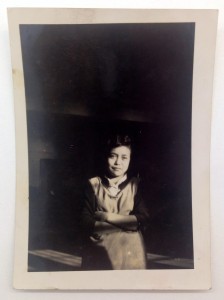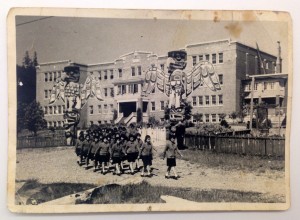Last week in class, we discussed the democratizing aspects of digitally born archives. In relation to conventional archival formats (i.e. museums and libraries), the digital, user-generated archive provides a realm where marginal voices are offered the opportunity to speak on an equal front. It is believed that a diverse assortment of personal narratives can be heard in the digital archive. However, as I slogged my way through the bewildering array of xenophobic and ridiculously patriotic documents in the 9/11 Digital Archive, I couldn’t help but question whether this collection of “individual” narratives were really all that different from one another. Could it be that the website’s platform enabled the homogeneity seen in the archive’s records?
Joanne Garde-Hansen addresses a similar concern in her article “MyMemories?: Personal Digital Archive Fever and Facebook”. In her analysis of Facebook in relation to the idea of ‘consignation’ in Derrida’s Archive Fever, Garde-Hansen argues that only superficially are social media platforms sites where “powerful and immediate versions of the self emerge and interconnect with others” (139). Garde-Hansen takes note of Facebook’s uniformity and how user profiles signal social norms as newcomers replicated their friends’ profiles in an effort to “fit-in with the existing digital collective” (139). With a structure in place, users must consign to tell their stories and record their memories in not only a formulaic way (as designed by the team at Facebook), but also in relation to how other users have conveyed their personal narratives.
Over the years, Facebook has evolved into a multifaceted platform where a user’s identity is not only created and preserved, but now actively remember (sometimes without consent). Since Garde-Hansen wrote her article in 2009, Facebook has undergone significant changes and ‘improvements’. Some of its newest features, “On this Day” or “A Year in Review“, allow users to remember their biggest moments on Facebook.
This morning as I logged on to my account, a post I had written “on this day” four years ago was displayed at the head my News Feed. Oddly enough, on March 28, 2012 I had posted a status announcing my acceptance to UBC. What an appropriate memory to recall now that I’m finishing up my degree! Although I’ve shared other posts on this day over the years, Facebook has chosen to remind me of this particular event based on what I can only assume is the number of ‘friends’ who’ve “liked” or commented on the status.
What this ultimately implies is that my memories (and whether or not I choose to recall them) are presented to me and attributed a value based on their relation to other Facebook users. With this new feature in place, I am forced to remember certain memories over others – not for how I value them, but for how others do. My memories on Facebook are tied to how they were evaluated by my ‘friends’. An user’s memory has gone from a subjective experience to a collective experience on Facebook. As a website founded on the ideals of inter-connectivity and friendship, Facebook’s default platform does not allow individual users to choose how they construct, archive, and more recently remember themselves. Since I am the only one who can see these memories when they appear on my newsfeed (unless I decide to ‘share’ them), why should they be displayed based on how others have rate them? Based on its fundamental nature, Facebook is not a truly ‘personal’ archive. One user’s personal narrative, identity, and memory will always and indefinitely be understood in relation to another’s.
Works Cited:
Garde-Hansen, Joanne. “MyMemories? Personal Digital Archival Fever and Facebook.” Save As…Digital Memories. Ed. Joanne Garde-Hansen, Andrew Hoskins, and Anna Reading. London: Palgrave MacMillan, 2009. 135-50.



